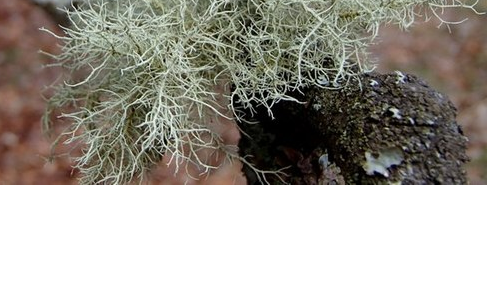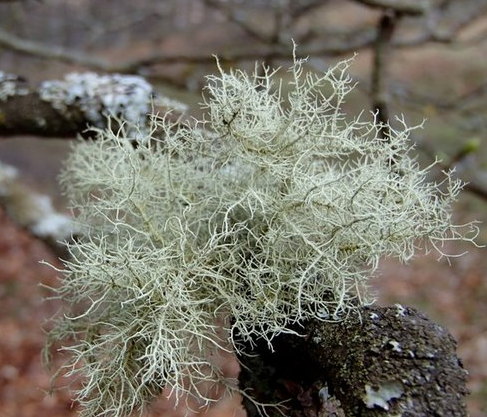
These dark, cold winter months may seem a bit lifeless but there are one set of species that still manage to triumph effortlessly throughout the winter: the lichens!
Lichens are two organisms (algae and fungus) living together in a symbiotic relationship. The fungus provides the body structure/protection and the algae provide essential carbohydrates. Find them on tree bark, tree branches/twigs and even on rocks.
When you start looking, you’ll realise they are everywhere – so looking at lichens is great citizen science for winter, and it can also reveal some really important scientific results because lichen can act as indicators for air quality and pollution.
Usnea
- Commonly known as Old Man’s Beard, Usnea is an easy lichen to spot on tree branches and fallen twigs.
- Usnea is a bushy lichen with grey-green thread-like branches.
- Air quality indicator: Nitrogen-sensitive (sign of good air quality).
Leafy Xanthoria
- A bright yellow leafy lichen, lobes of the leafy xanthoria are broad and appear quite closely attached to the bark. Orange fruiting bodies are often present.
- Air quality indicator: Nitrogen-loving (sign of poor air quality).
Parmelia
- Another leafy lichen, Parmelia has loosely attached lobes to the bark.
- The lobes are grey on top and dark underneath. It is also visible to see small patterns of white lines on the surface of the lobes.
- Air quality indicator: Intermediate (sign of average air quality).
If you’d like to know more about lichens, take part in the OPAL Air Quality Survey, which involves recording different types of lichen to find out about the air quality near you. Also, on our website you can also find lots more ideas of ways to get involved in citizen science.

